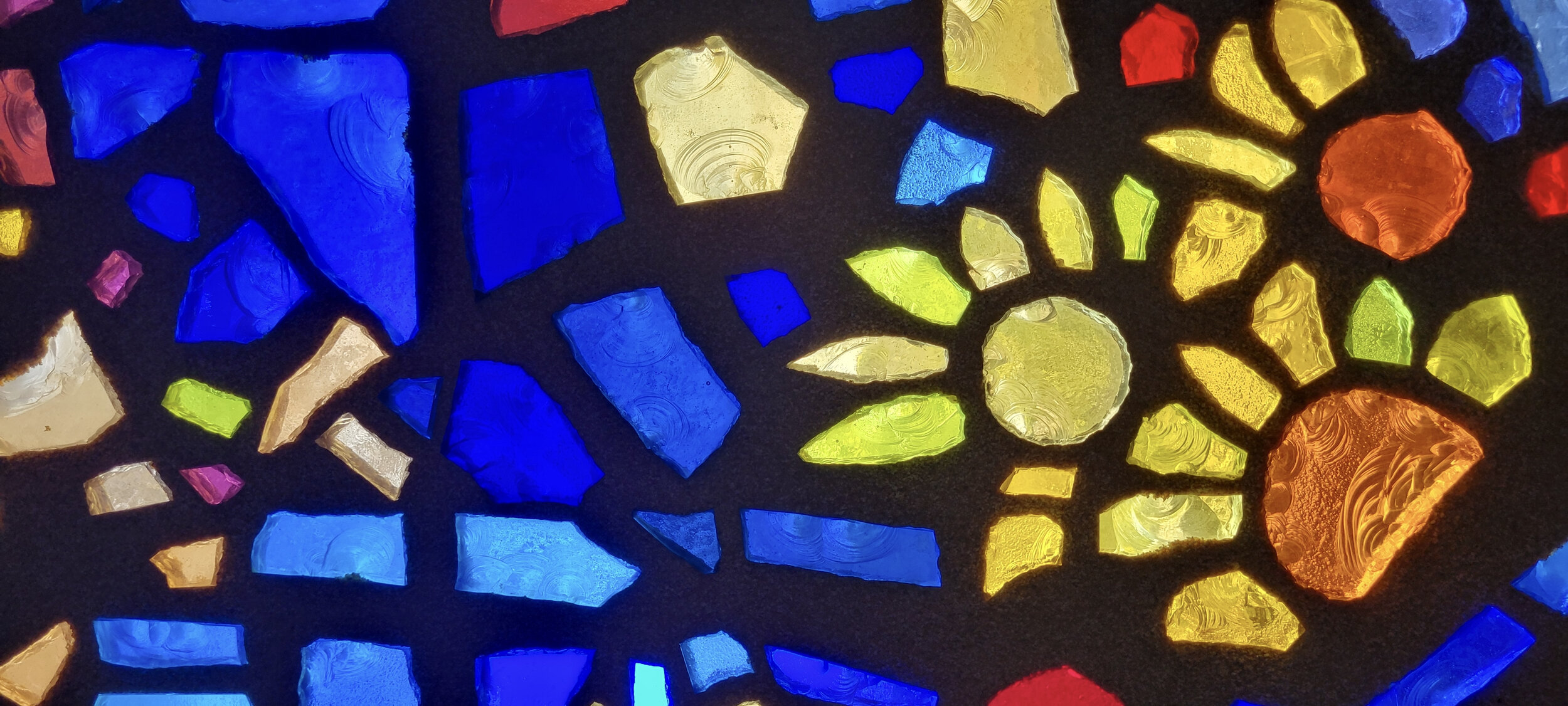
Dalle De Verre Technique
Dalle de verre windows are created from inch thick glass slabs called “dalles”. The dalles are usually about 8x10 inches in size. Each piece of glass cut from a dalle is eventually set in a matrix of concrete or epoxy the size of the finished window. To complete the window, the panel assembled from the pieces of glass held in place by the cured matrix is set into an opening in the architecture
The artist starts the process by drawing a small design for the window. Colors within the design are usually indicated on that miniature.
The design is then transferred to sheets the full size of the finished window. The pattern for each piece of glass is cut out and temporarily placed on an uncut second full sized sheet.
Then colors for individual pieces are selected from stocks of different colored dalles.
The color of each dalle is usually fairly uniform. However dalles with color variations can provide interesting effects by selecting the way in which the color variations are arranged in the final shape of the piece of glass. The glass is cut to roughly the shape of the pattern for that piece. Often a chisel and hammer is used to form the shape of the individual piece of glass. For more precise shapes, the cut can be made or modified by using a manual glass cutter, a diamond saw, or by chipping or grinding the edges to the desired shape. The edges of the glass are sometimes deeply chipped to enhance the brilliance of the color.
Chipping can also produce shading. The intensity of color depends on the thickness of the glass, so the color of each piece of glass will be less intense in the areas of the chip.
Next, the cut and chipped pieces of glass are fixed in place in a mold frame the size of the finished panel. The space between the pieces of glass can be varied to enhance the design of the window, but must always allow space to pour the matrix. In the windows at Christ Episcopal Church, Gabriel Loire used epoxy as the matrix.
The color of the epoxy can be adjusted to be compatible with the finishes on the interior of the church. The epoxy resin is poured carefully around each piece of glass, and is sometimes coaxed to the proper thickness using a thin trowel. If the glass has been deeply chipped to produce faceted edges, the matrix is usually poured about half the thickness of the glass to allow the faceting to refract the light. Before the epoxy cures and hardens, sand is sometimes sifted into the mold to texture the interior surface of the panel.
After curing, the panel is removed from the mold, excess sand is brushed from the surfaces and the panel is cleaned and readied for installation.
